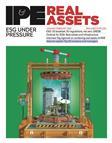EUROPE – A study carried out for the UK-based Investment Property Forum has questioned the reliability of UK property market forecasts, citing forecasters' aversion to "big numbers" in published forecasts and inconsistent measurement of market mood factors.
Based on a sample of 69 forecasters, a team of academics led by Professor Simon Stevenson of Reading University claimed forecasters overestimated capital growth and total returns in poorly performing markets, especially during periods of extreme volatility.
Stevenson's team found rental growth forecasts to be significantly more accurate, with a strong correlation between one-year forecasts and actual rental growth.
However, the correlation with two-year forecasts for rental growth turned out – like those for capital growth and total return over one and two years – to be insignificant.
However, his study found no evidence of systematic bias. The problem is more likely to lie in potentially inaccurate data, limited variables, insufficiently sophisticated statistical methods and erroneous assumptions.
Consultant Gerald Blundell suggested investors were unlikely to rely on forecasting to describe the future accurately.
Rather, he said, they aimed to convert uncertainty into measurable risk – but that current forecasting models failed to take into account leasing periods, probability of payment delinquency, rent-free periods or risk premiums.
"The faults in current practice are persistent – clustering, conservatism and complacency," he said.
Two more academics, Michael White from Nottingham Trent University and Craig Watkins at the University of Sheffield, suggested the "subjective market overlay", which aims to capture market sentiment, may also contribute to inaccuracy because of inconsistencies in the quantification of essentially qualitative variables.
One problem, according to White and Watkins, is that real estate models have failed to keep up with their econometric counterparts, leaving forecasters struggling to compensate, for example, with the model's inability to catch structural breaks.
They suggested an alternative model that adjusts the model, isolating mood when forecasts suggest an optimistic or pessimistic economic outlook.
"The overlay process is a sensible method of catching behavioural influences, but it ought to be more systematic and rigorous," they said.












